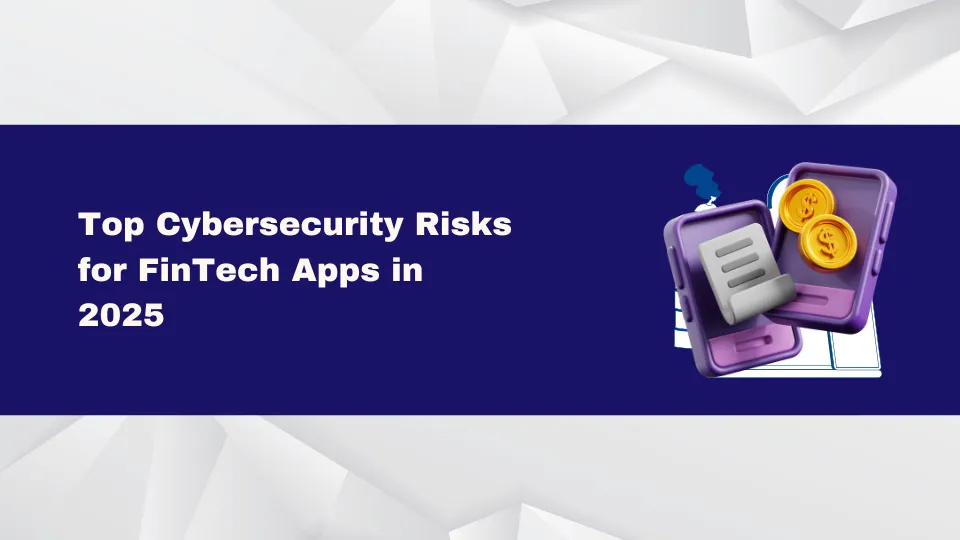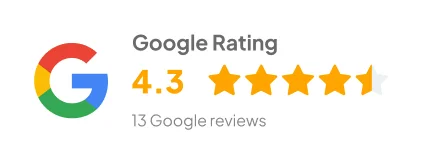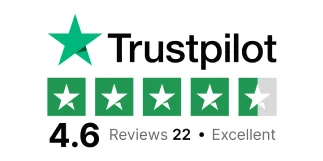Financial technology applications enable users to handle their finances with extraordinary efficiency. The convenience offered by these mobile application choices allows users to both transfer funds to loved ones and fulfill payment obligations and execute financial investments. But as they actually grow in popularity, they’re also literally becoming prime targets for hackers. Cybercriminals are constantly coming up with new ways to steal money and data, making security a huge concern for FinTech apps in 2025.
Let’s break down the biggest cybersecurity risks for FinTech apps in 2025 and how companies can deal with them—without the tech jargon, just plain and simple explanations.
1. Data Breaches: Your Information Isn’t Really as Safe as You Actually Think They are
The possibility of your bank details being stolen along with your passwords and everything else you keep in your digital accounts actually happens in data breaches. Hackers actually break into systems and steal all the sensitive data.
Example: Robinhood Hack in 2021
The personal details literally from nearly 7 million Robinhood users were actually compromised by hackers in 2021. The hackers employed a trick that actually forced every employee to provide access to their system.
Why It’s Actually Still a Big Problem in 2025
Hackers are now literally using AI tools to make their attacks smarter and faster. If FinTech apps don’t step up their game, breaches like this will keep happening.
How to Fix It:
- Encrypt all user data so it’s useless even if stolen.
- Limit access to sensitive information—only a few people should have it.
- Test systems regularly to spot weaknesses.
2. Ransomware: Pay Up or Truly Lose It All
Ransomware is actually when hackers lock you out of your app or data and literally ask for money to give it back. For FinTech apps, this can actually mean complete shutdowns.
Example: WannaCry Disaster
The WannaCry ransomware attack in 2017 literally caused chaos worldwide. Hackers actually exploited outdated software, and businesses had no choice but to actually pay up or lose their all the data.
Why It’s a 2025 Nightmare
FinTech apps depend on APIs (connections to other systems) and third-party tools. If one of those has a weak spot, hackers can easily slip in.
How to Prevent It:
- Keep all software updated—no skipping updates!
- Back up data so you can recover without paying.
- Use strong security for APIs and external services.
3. Phishing: Don’t Fall for the Fake Stuff
Phishing actually happens when hackers pretend to be someone you truly trust (like your bank) to actually trick you into sharing all the sensitive information.
Real-Life Scam: Zelle Phishing
Hackers sent fake emails pretending to be from Zelle, a payment app. People actually, without knowing anything, gave up their account details, which were then actually used to literally steal all the money.
Why It’s Still a Risk in 2025
Hackers now use AI to send super convincing fake messages that look exactly like legit emails or texts from banks or apps.
How to Actually Stay Safe:
- Always try to double-check all the emails or links before actually clicking on them.
- Enable two-factor authentication for truly extra security.
- Train all the users to literally spot scams early before its too late.
4. Weak APIs: The Secret Backdoor
APIs are like highways connecting FinTech apps to other services, like banks and payment gateways. But if these highways aren’t secured properly, hackers can use them as a shortcut to break into systems.
Example: Venmo API Issues
Researchers found that Venmo’s API allowed anyone to see user transactions, raising concerns about privacy and security.
Why It’s a 2025 Problem
More FinTech apps now rely on APIs, but not all of them invest in securing these connections. That makes them easy targets.
What Can Be Done:
- Add strong locks (authentication) to APIs.
- Monitor API activity for anything unusual.
- Regularly test APIs to find and fix weak points.
5. Insider Threats: The Enemy Inside
Sometimes the biggest risk comes from people on the inside—employees who either make mistakes or intentionally leak data for money.
Example: Desjardins Data Leak
In 2019, a rogue employee leaked the personal information of 4.2 million customers at Desjardins, a Canadian financial institution.
Why It’s Still Literally a Risk in 2025
With remote work being really common nowadays, it’s really harder for companies to keep an eye on their employees’ activities, making insider threats more likely.
How to Handle It:
- Only give employees access to what they need—nothing extra.
- Track employee actions to actually catch any suspicious activity early.
- Create a work culture where employees understand the importance of security.
6. Mobile Malware: Attacking Your Phone
Hackers love going after FinTech apps on mobile phones because that’s where most people use them. Mobile malware can steal your login info, card details, or even control your device.
Example: BlackRock Malware
This nasty malware targeted over 300 apps, including popular FinTech apps, and stole users’ credentials.
Why It’s Bigger in 2025
More people are actually using mobile devices for banking, making it a hot target for hackers. Plus, not everyone actually keeps their apps or phones truly updated.
What Users Can Actually Do:
- Download apps only from official app stores.
- Use strong, unique passwords for apps.
- Always truly update apps and phones regularly to actually patch security holes.
7. Supply Chain Attacks: Breaking in Actually Through the Backdoor
Hackers actually don’t always attack FinTech apps directly. But actually sometimes, they literally target a third-party service that the app actually relies on, like a payment gateway app or any cloud provider they actually use.
Example: SolarWinds Hack In 2020
Hackers literally breached SolarWinds’ systems and also try to used it to actually attack many of its clients, and it literally caused chaos in multiple industries.
Why It’s a 2025 Concern
With FinTech companies working with so many external services, a single weak link in the chain can bring everything crashing down.
How to Reduce the Risk:
- Choose vendors with strong security practices.
- Limit the access third parties have to sensitive systems.
- Regularly review and monitor vendor activities.
What Can FinTech Companies Do?
Here’s how FinTech companies can stay ahead of these threats:
Educate Employees and Users: Most attacks start with human error. Training everyone to recognize and avoid scams can make a big difference.
Use AI for Security: AI tools can literally spot all the suspicious activity and actually stop attacks before they actually happen.
Invest in Regular Testing: Test your app’s security often to actually find and fix issues before any hackers do.
Conclusion
Cybersecurity threats to these FinTech apps in 2025 are real, but they’re not unbeatable. Also, with all the right steps, all the companies can truly protect their apps, data, and all the users from any harm. By actually staying one step ahead of hackers, FinTech can literally keep transforming the financial world without really putting anyone at risk.
So, next time if you actually use any FinTech app, then remember that behind that truly sleek interface, a lot of work goes into literally keeping your money and data safe!
Connect with us for bringing your FinTech idea into vision!

_thumb.webp)
_thumb.webp)
_thumb.webp)

_thumb.webp)













